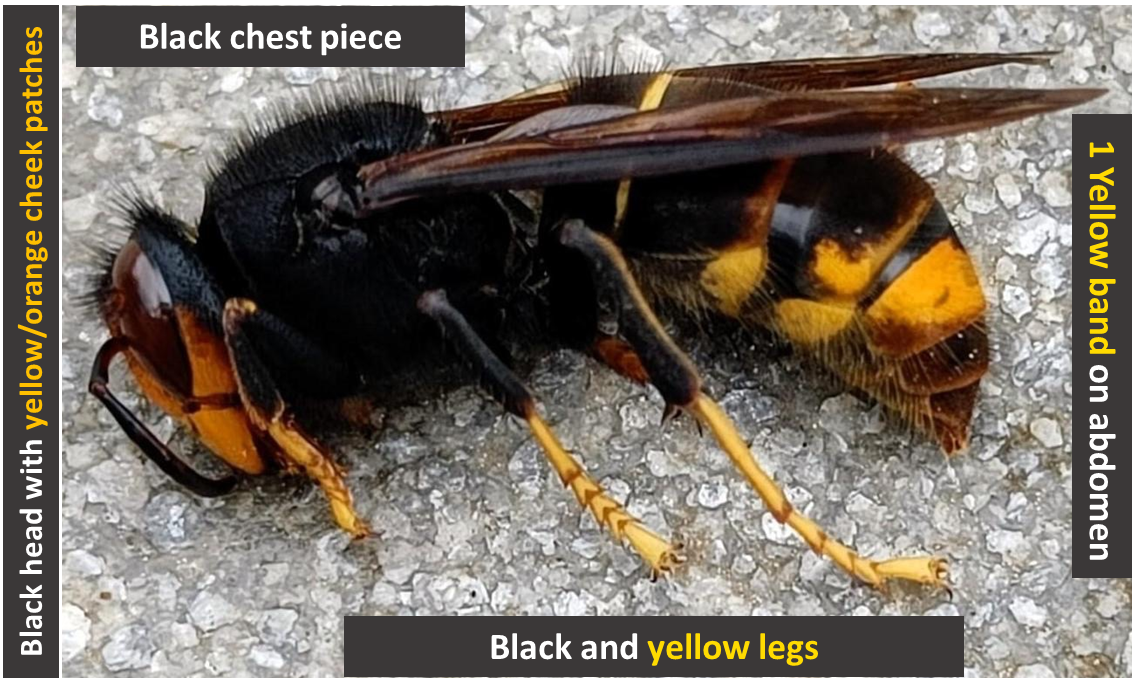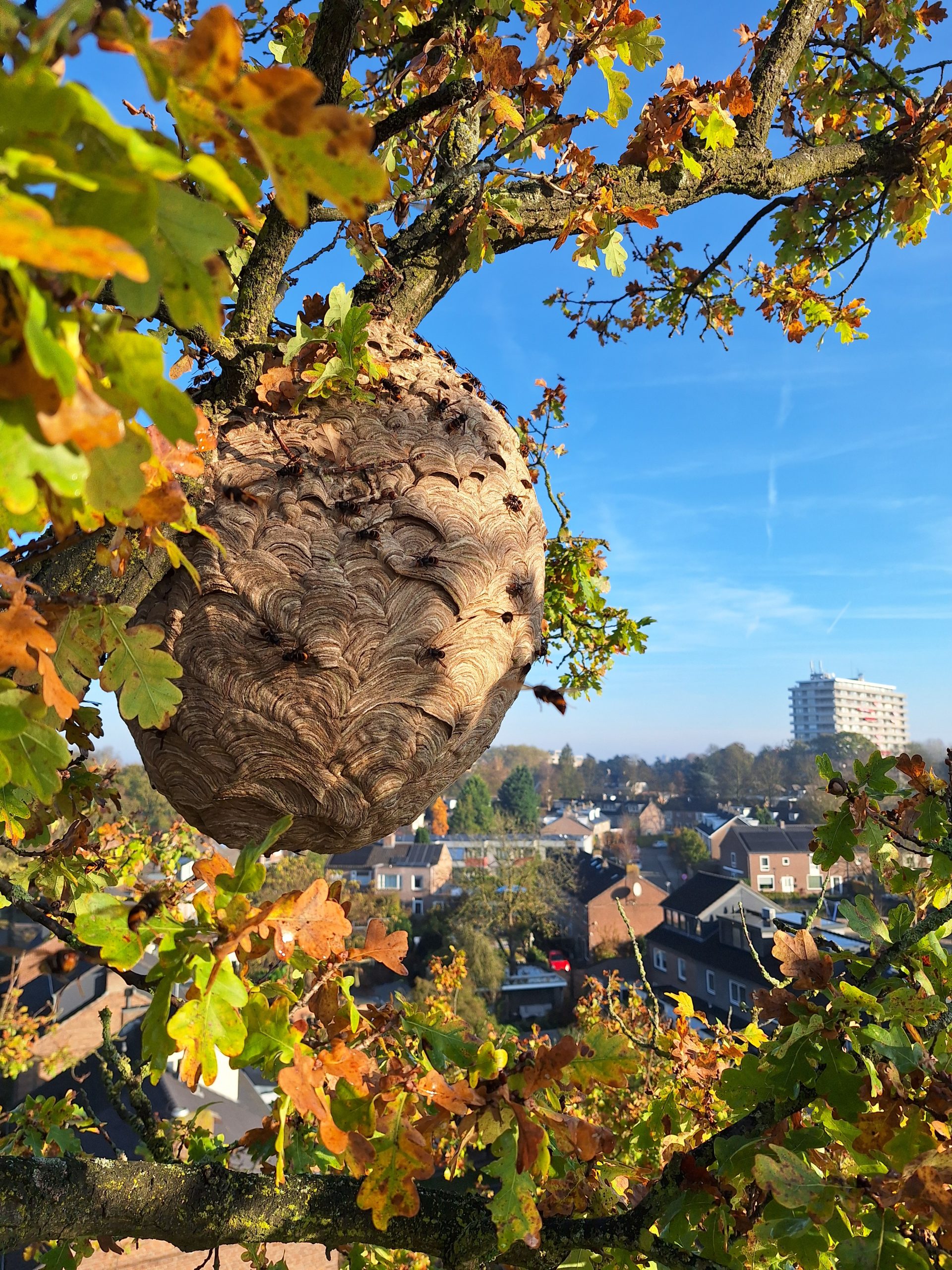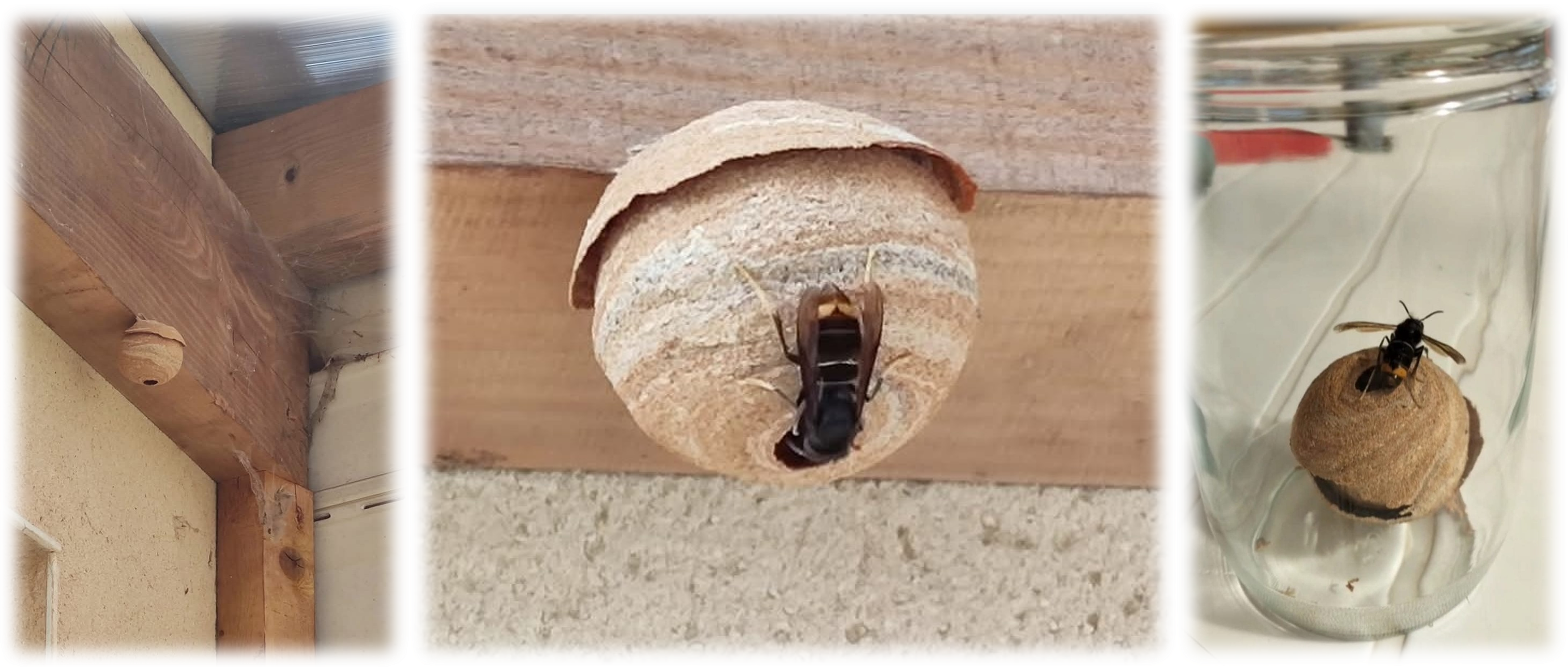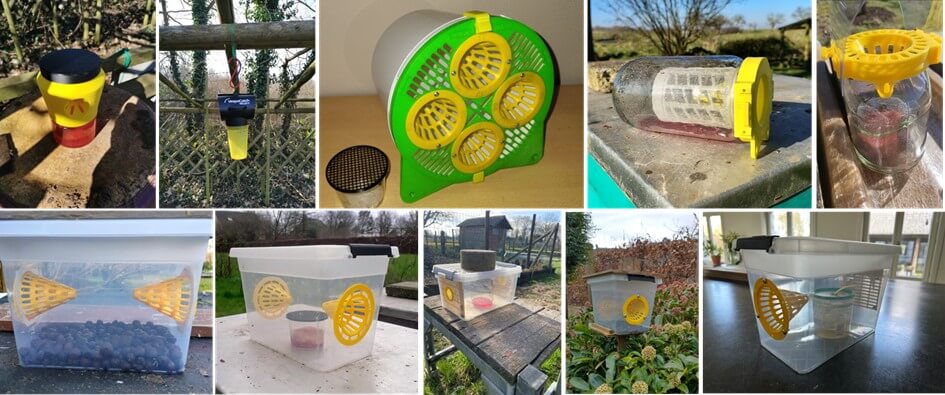Hornet Spotter
Asian hornet

The Asian hornet (Vespa velutina), an invasive exotic species, is very harmful to beehives and biodiversity. This Asian hornet has no natural enemies here, except for the honey buzzard. A nest of the Asian hornet consumes about 12 kg of insects per year (= about 100,000 insects). We are trying to limit the spread of this exotic species.
Catch of queens and possible bycatch
What do you do if there is a hornet queen in your trap?
-
If it is the only one in there, put it in the freezer for a few hours. Be aware that you should always kill the animal. They are persistent and after a few hours in the freezer they can come back to life when the temperature rises.
-
If there is only bycatch, open the bait trap so that they can fly out.
-
If there is both a queen and bycatch, put it in the refrigerator for fifteen minutes. The cold temperature will make the insects drowsy. You can now remove the queen and kill it or cut her in half. Then put the trap in the sun and the higher temperature will make them come back to life and the insects will fly away again.
Primary nests or spring nests
If these queens do manage to make a spring nest, the nest is located close to the ground or at a maximum height of a few meters on outbuildings, in ivy, in bushes, … At this stage of the nest, extermination is still easy to carry out by an exterminator (sometimes by a beekeeper) and this can be done more easily and without harmful pesticides. The exterminator can treat the nest with freezing spray or remove it with a special vacuum cleaner. These nests are also removed each time.
Secondary nests

The secondary nests require a different approach; they can sometimes hang up to 30 metres high and can be up to 1 metre in diameter and are therefore much more difficult to destroy.
Poison (Permas-D) is often used for the extermination. The use of this poison meets with a lot of resistance. It is a poison that has a strong impact on cold-blooded animals.
Hornet spotter has an extermination set (vacuum cleaner) that can be used up to 35 metres high, and will experiment with this system during the season. We will certainly share the results of this set on the website and if it is very effective, we will send it as a recommendation to the local authorities.
What was recently established is that the Asian hornet also makes nests underground. In doing so, it uses existing tunnels of voles, rabbits, etc. It is therefore advisable not only to look up for nests but also down. The ground nests pose an immediate danger to humans.
Danger to humans
In France, 4 deaths were counted last year due to an attack by the Asian hornet.
If you get too close to a nest and the hornets feel threatened, they will attack. It can be very aggressive. So try not to get too close to a nest and certainly not to remove it yourself.
It is not if but when the first deaths will occur in our country. Let us take action to keep that risk as low as possible.
Awakening of the queens in spring
In the spring, the queens wake up and start building a new nest (embryonest) in sheds, garden sheds, roofs, awnings, barbecues, …
In the photo below you can see what an embryonic nest looks like. It is no bigger than a tennis ball. It is also in the spring that bait traps are placed.

Selective traps
To catch the queens, we use selective traps from March to June so that they cannot start a nest. The great advantage of selective traps is that there is little or no bycatch of other insects. Selective traps are constructed in such a way that insects cannot get to the liquid attractant. If they do, a lot of them will drown. In this series of photos you can see a number of selective traps. Often, bait traps are used in which a sponge, soaked with attractant liquid, is placed in the trap. You can also place pebbles or grains to prevent drowning. You can also work with a bowl over which you pull a mosquito net. Or you can put a jar in it with a lid on it and a wick through the lid.
Don’t forget to spray the entrance of the bait trap with attractant. This will increase your chances of catching it. Placing the trap near bushes and trees that the hornet is crazy about will also increase your chances of catching it.
A trap is also sometimes used, but we do not know how effective this is.
By reporting your decoy traps and the queen catch, we gain a better insight into the effectiveness and bycatch of the different models. If you remove the decoy trap, it is best to delete it in the app. All data about the decoy trap remains in the database.
Here is an example of a number of selective traps.

What to do if you spot an active nest?
-
Mark the nest as an “active nest” notification in the Hornet spotter app.
-
Stay away
-
Notify the fire brigade or municipal services. They can take action to destroy the nests. If you notice that nothing is being done, insist with your local government. If the request to destroy remains unanswered, send an email to our email address.
Destroyed nests and empty nests
 If you have spotted a nest, be aware that it is possible that this nest has been destroyed. Look carefully for movement around the nest. Check the app to see if the nest status is destroyed. After the hornet season, when the leaves have fallen, you can often see the nests hanging very well. There may still be life in them. But it could also be an abandoned nest where the queens have found a place to hibernate. In either case, report the nest in the hornet spotter app.
If you have spotted a nest, be aware that it is possible that this nest has been destroyed. Look carefully for movement around the nest. Check the app to see if the nest status is destroyed. After the hornet season, when the leaves have fallen, you can often see the nests hanging very well. There may still be life in them. But it could also be an abandoned nest where the queens have found a place to hibernate. In either case, report the nest in the hornet spotter app.




